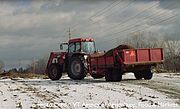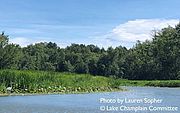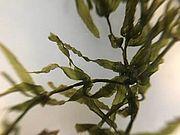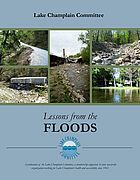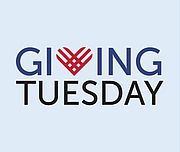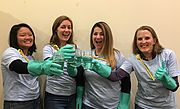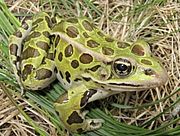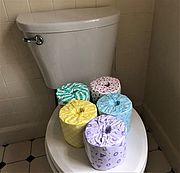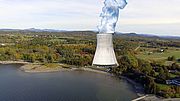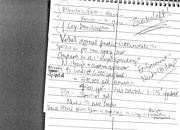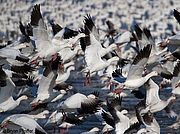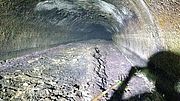A coalition of Environmental organizations—the Lake Champlain Committee (LCC), Conservation Law Foundation (CLF), Vermont Natural Resources Council (VNRC), and Vermont Audubon—issued a water quality-related press release on December 13, 2019.
Read...News from Selected Month
Protecting wetlands is a longstanding priority for the Lake Champlain Committee (LCC). The areas of interface between shoreland and water are a vital part of Lake Champlain’s ecosystem. Thank you for using your voice to protect Vermont’s wetlands now and into the future by contacting our legislators! We need a modern goal of a net gain in acres of wetlands through protection and restoration.
Read...In early September, Lake Champlain Basin Program Boat (LCBP) Launch Steward Matthew Gorton was conducting a routine boat inspection for invasive species prevention at a public access site in South Hero, Vermont when he noticed an unusual plant hanging off a boat trailer backing into the lake.
Read...Eight years ago last April 13, Lake Champlain reached flood stage (100 feet) and stayed above that level for a record-setting 67 days. Waters rose to 103.27 feet – the highest the lake has been since records have been kept. Lakeside homes, roads and buildings were inundated and battered by wind-driven waves. Then, on August 28, 2011 Tropical Storm Irene slammed into the Champlain Valley. Up to 11 inches of rain fell in the mountains; rivers swelled and flooded; homes, roads and bridges were wiped away.
Read...December 3 is Giving Tuesday, the "Black Friday" for charitable giving and part of an international movement to create a day of giving back. Please consider participating by making a gift of time or money to the Lake Champlain Committee.
Read...Hundreds of LCC-trained volunteers took to the water from mid-June through mid-November to assess conditions at more than 100 Lake Champlain and inland waterway sites. Each week they scoured the shoreline for signs of cyanobacteria, donned gloves and took water samples and faithfully filed online reports.
Read...When it comes to the wicked cold of winter, wildlife and humans are in it together: we bundle up, bunker down, hibernate, or head south. A plunge below Lake Champlain’s surface reveals the winter adaptations of hardy wildlife—it’s like watching a nature documentary in slow motion.
Read...Wastewater treatment and septic systems are designed to handle the four Ps—pee, poop, puke, and (toilet) paper—and nothing else. Flushing other paper products, plastics, disposable diapers, pharmaceuticals, dryer lint, condoms, tampons or applicators, or flotsam and jetsam is a big no-no. Wipes clog pipes, even if they are marketed as “flushable".
Read...Waterfowl add a bright note to frigid winter days. Many birds escape from colder northern climes to the comparative warmth of Lake Champlain. Ducks can be observed on the lake throughout the winter, in open waters or wherever the edge of the ice is.
Read...Fifty years ago this past September, LCC led grassroots opposition to a proposal to build a nuclear power plant on the Charlotte, VT shore. Kevin Burget of the Charlotte Conservation Commission interviewed LCC Advisory Council member Peter Paine for this retrospective on what happened to chart a different future for Lake Champlain.
Read...Eight months ago, an Addison County, Vermont farm spread excess liquid manure overtop its snow-covered fields. Since then, two Vermont state agencies, the Agency of Agriculture, Food & Markets (VAAFM) and the Agency of Natural Resources (VT ANR), Department of Environmental Conservation (VT DEC), have failed to penalize the farm for this violation.
Read...This report by biologist, writer, explorer Bryan Pfeiffer provides annual breaking news on the migration of snow geese through Vermont and New York. Clinton County, New York is currently 2019’s snow goose hotspot: 8,000 snow geese were observed in King Bay, south of Rouse’s Point, on November 25. Numbers have declined in Vermont, where 106 snow geese were noted at the Dead Creek Wildlife Management Area in Addison on November 26.
Read...Fatbergs have become commonplace in city sewer systems around the world. They are an accumulation of fat, oil, and grease congealed around common household solid waste items like “flushable” wipes, paper towels, and tampons. The removal of fatbergs places a financial burden on cities.
Read...
